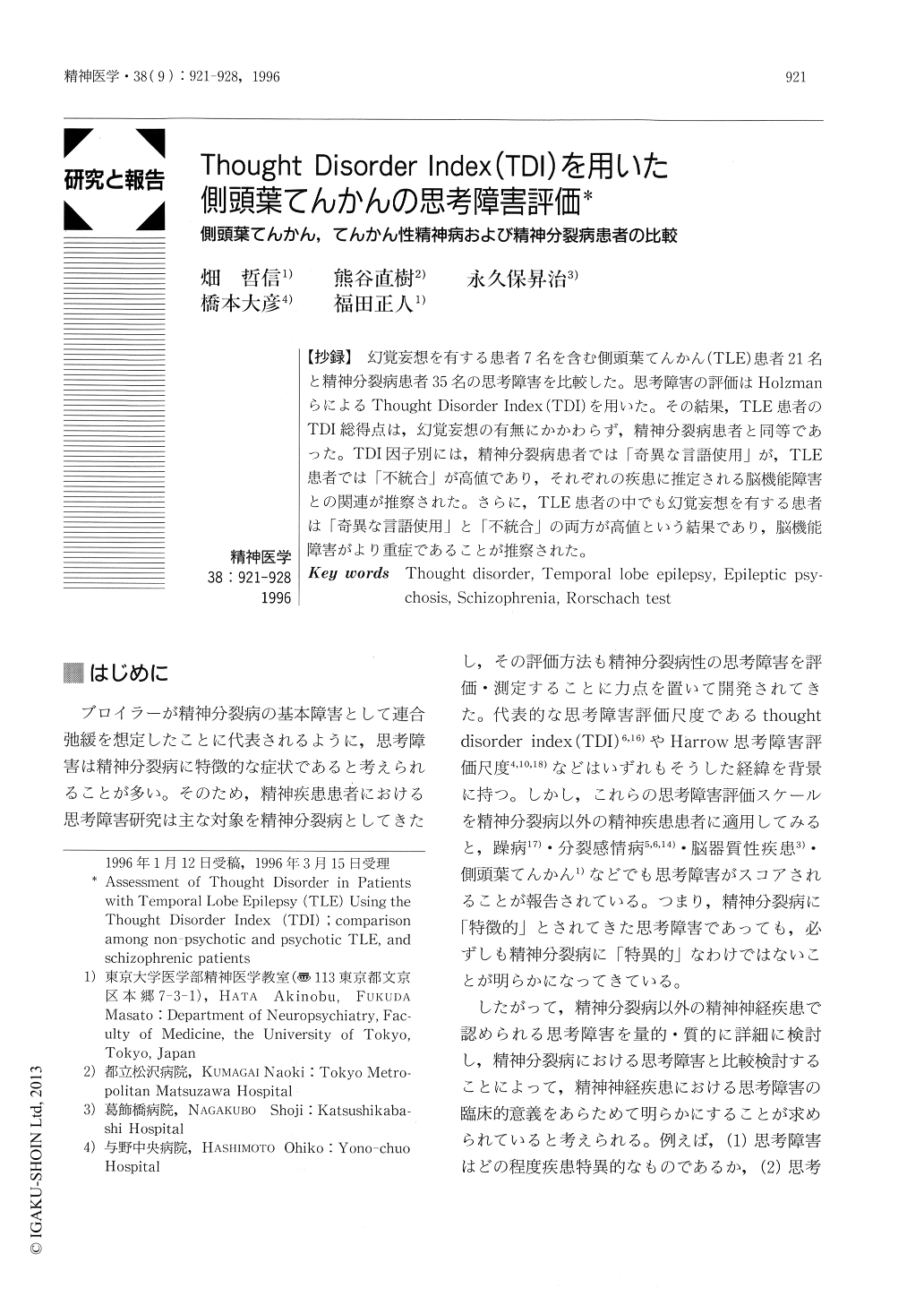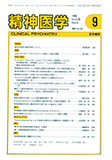Japanese
English
- 有料閲覧
- Abstract 文献概要
- 1ページ目 Look Inside
【抄録】幻覚妄想を有する患者7名を含む側頭葉てんかん(TLE)患者21名と精神分裂病患者35名の思考障害を比較した。思考障害の評価はHolzmanらによるThought Disorder Index(TDI)を用いた。その結果,TLE患者のTDI総得点は,幻覚妄想の有無にかかわらず,精神分裂病患者と同等であった。TDI因子別には,精神分裂病患者では「奇異な言語使用」が,TLE患者では「不統合」が高値であり,それぞれの疾患に推定される脳機能障害との関連が推察された。さらに,TLE患者の中でも幻覚妄想を有する患者は「奇異な言語使用」と「不統合」の両方が高値という結果であり,脳機能障害がより重症であることが推察された。
Thought disorder was assessed using the Thought Disorder Index (TDI; Solovay et al. 1986) in patients with temporal lobe epilepsy (TLE; n=21), and was compared with that in schizophrenic patients (n=35). The TLE patients were divided into those without (n=14) and with (n=7) chronic psychotic symptoms. The total scores of TDI in both non-psychotic and psychotic TLE group, or in TLE patients as a whole did not differ from those in schizophrenic group. However, the TDI factors scored were different among patient groups as followed: (1) TLE patients were significantly higher on 'idiosyncratic verbalization' score and lower on 'disorganization' score than schizophrenics, and (2) TLE patients with psychotic symptoms showed higher score on both 'idiosyncratic verbalization' and 'disorganization' factors than those without psychotic symptoms. This study shows that the TDI is successfully applied not only to schizophrenic patients but also to TLE patients. The observed different pattern of thought disorder category between TLE and schizophrenic patients may reflect the corresponding brain dysfunctions in each disease. The coexistence of TLE-and schizophrenic-characteristic thought disorder in psychotic TLE patients was assumed to derive from rather severe nature of their brain dysfunction.

Copyright © 1996, Igaku-Shoin Ltd. All rights reserved.


